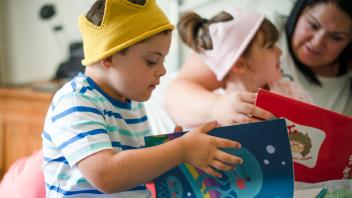We all love picture books, and hopefully a really good one finds its way into your hands at least once a day. What might happen less frequently is that you use a picture book to help you teach science. I’ve got a great resource (with a free PDF!) that will hopefully encourage you to use more picture books in science.
Picture Perfect Science Lessons describes how a picture book can help guide students through an engaging hands-on inquiry lesson. The lessons are designed for students in grades 3-6, and include reading comprehension strategies. It’s a great supplement to your existing science program.
Chapter 1 reminds us why picture books are so great in science class. Reasons include:
- Picture books provide context for the concepts you’re exploring. The colorful pictures and graphics help explain abstract ideas.
- A picture book will tend to focus on fewer topics and give more in-depth coverage of a concept.
- Reading a picture book in science gives kids a chance to practice reading a somewhat unfamiliar genre.
- Picture books can help correct science misconceptions.
Chapter 2, on Reading Aloud, provides ten tips for reading aloud, information about reading comprehension strategies, and tools to enhance comprehension.
The National Science Teachers Association (NSTA) has a free PDF of the first five chapters of the book. To access it, you’ll need to establish an account at NSTA and add the PDF to your virtual professional library. It takes an extra few clicks, but I think the free download is worth it.
Looking for ideas for outstanding science trade books for students K-12? Click here to see lists of books by year
About the Author
Along with her background as a professor, researcher, writer, and teacher, Joanne Meier is a mom. Join Joanne as she shares her experiences raising her own young readers, and guides parents and teachers on the best practices in reading.

